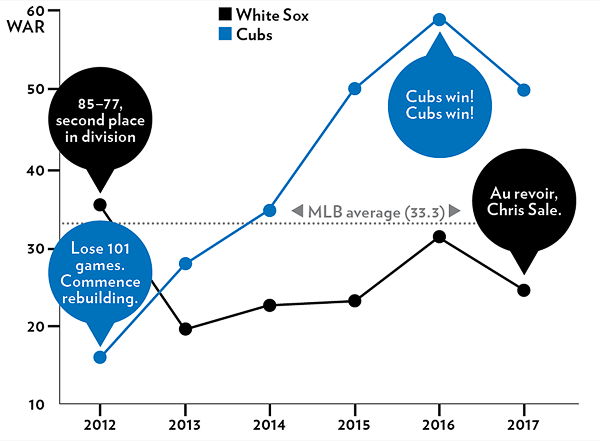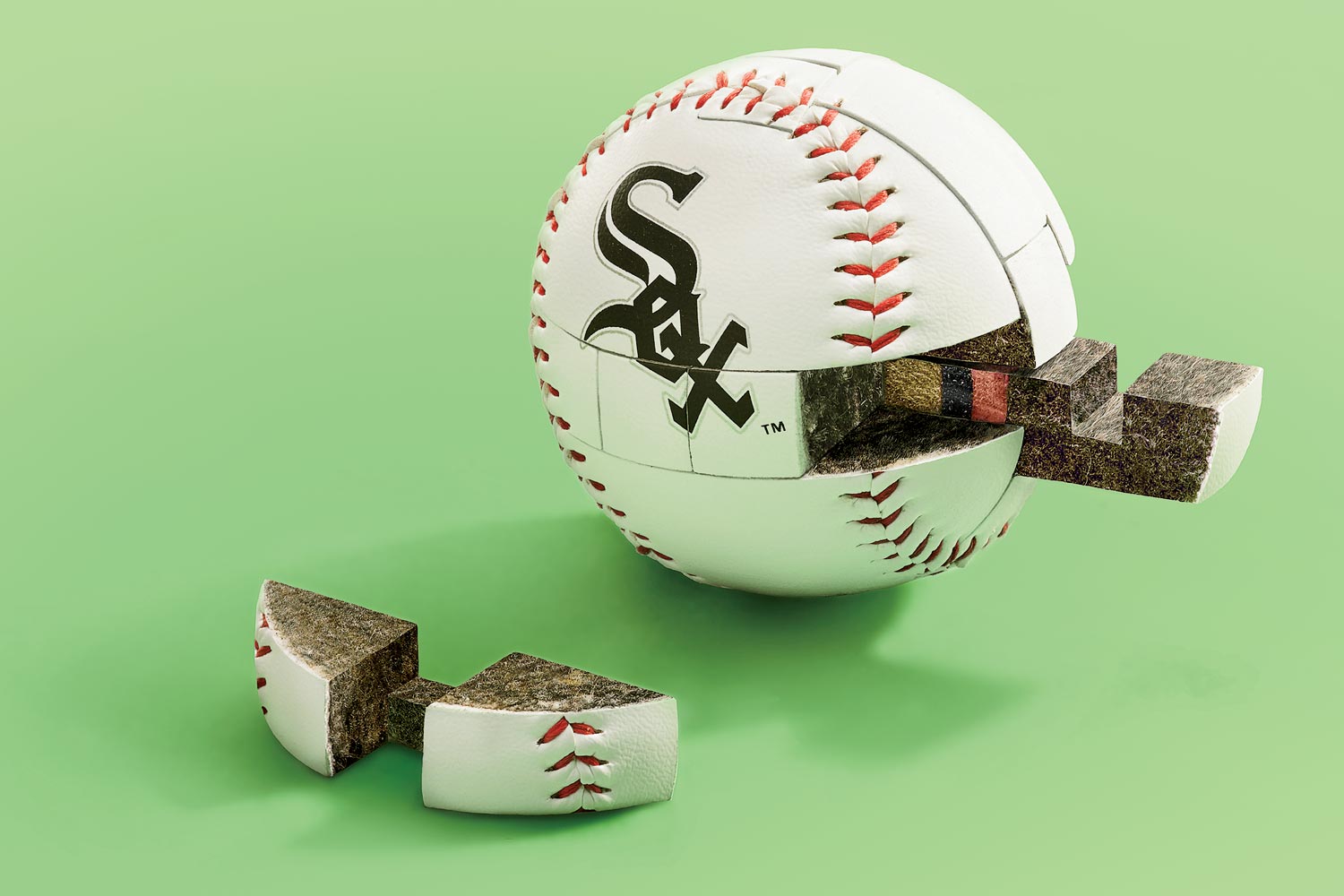Here’s some baseball trivia for the thinking fan: Did you know Chicago hosts not one but two major-league teams? Word is, the Chicago White Sox even won a title a few years back.
Of course, you’d be forgiven for forgetting about the Sox, given the hullabaloo that the team up north created last season when they—let me check my facts, yes, that’s right—won the World Series for the first time in more than a century. And there’ll be a temptation, as the South Siders enter yet another transitional season with ex–Cubs skipper Rick Renteria at the helm, to frame every move the Sox make in terms of the Cubs’ model for success.
On the surface, it’s easy to assume the Sox are trying to follow the same path. The Cubs won big last year in large part because they had been willing to trade away veteran players and suffer through a couple of horrific seasons after Theo Epstein first came onboard. (Remember when they lost 101 games in 2012? How soon we forget.) Similarly, the Sox have shown a willingness to rock the clubhouse. Their off-season trade of one of the league’s best players, ace Chris Sale, a.k.a. the Edward Scissorhands of the locker room, showed that no one was untouchable. They also sent their fine outfielder Adam Eaton packing. In return for those two veterans, the team got a slew of young prospects.
But that doesn’t mean the White Sox are headed toward a wholesale rebuilding and a painful stretch of tanking like the Cubs did. Why not? In short, they’re too late, and they know it. The Cubs lost in an environment that substantially rewarded losing and in which only one other team, the Astros, willfully tanked. Those dynamics have changed.

The Cubs’ biggest bounty from losing came in the draft. With the high picks they were awarded, they snagged Kris Bryant, No. 2 overall in 2013, and Kyle Schwarber, No. 4 in 2014. Bryant, of course, went on to become the National League MVP last year. As for Schwarber? Without his epic comeback and clutch Game 7 hit, the World Series win probably wouldn’t have happened.
The Cubs’ dismal record also paid off through the international free agent market. Epstein used the extra spending power the league then awarded to especially bad teams to fill his farm system with some of the best young foreign talent available. That includes Jeimer Candelario, Eloy Jimenez, and Oscar De La Cruz—all of whom have seen limited or no major-league duty but are expected to contribute in years to come.
So why can’t the Sox similarly benefit? For one, the league’s new international bonus rules, which take effect this season, severely restrict the amount any team can spend on foreign players, providing less upside to losing. Now no team—regardless of performance—can dole out more than about $6 million in any year in the international market. By comparison, the Cubs dropped nearly $19 million in 2015 alone.
The Sox can’t count on reloading in the draft, either. In baseball, the drop-off from one pick to the next is more pronounced than in any other sport. The first pick is way more valuable than the second pick, the second way more valuable than the third, and so on. If you pick fifth, odds are you’ll get a player who will be only about 45 percent as good as the top pick over the course of his career, according to analysis by the stats-geek website The Hardball Times.
What all that means for the White Sox: There’s little value in being bad if you’re not going to be really bad. And today a coterie of teams seem intent on outlosing each other. The Braves, who’ve executed a near-total teardown over the past two seasons, are the prime example, but the Reds, Twins, and Phillies have also proved to be adept at losing. With at least four other teams competing for the cellar, there’s no panacea for a team like the White Sox, caught between a full rebuild and a desire for some measure of success in the present.
And that’s the thing: The Sox haven’t committed to a single strategy. They may have traded away their biggest and most marketable stars, but they kept other key contributors—namely, the Joses (Abreu and Quintana), Todd Frazier, and Tim Anderson. You can’t really blame the Sox for trying to have it both ways. Without the season ticket base or big-money TV contract that the Cubs have, they need to put a product on the field every year that draws fans to a ballpark that—for all its, uh, charms—is not Wrigley Field. Their revenue stream depends on it.
Could the White Sox field a competitive team in 2017? Sure. Even without Sale, their starting rotation remains a strength. And further down the line, the young players they acquired in the big trades this winter—primarily Lucas Giolito, Michael Kopech, Reynaldo Lopez, and Yoan Moncada (considered the No. 2 prospect in all of baseball)—show real promise. But they could just as easily lay an egg. The lesson of the past 50 years is that you can never really predict, with complete confidence, which prospects will pan out. And if this crop doesn’t, the White Sox lack the financial muscle to haul in big free agents to close the gaps.
It’s a bit of an impossible position. Without a clear direction, the Sox are being squeezed on all sides. Let’s hope it doesn’t doom them to mediocrity.
Reversal of Fortunes
How the Sox and Cubs rosters have stacked up in recent years, based on WAR, a stats-based measure of team strength




